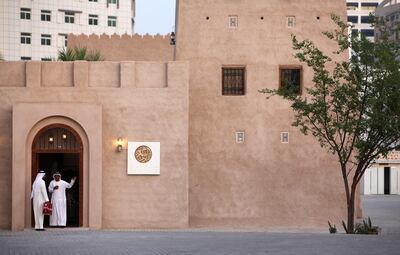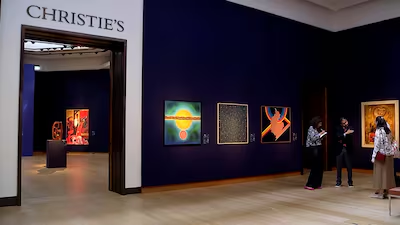I recently started watching the show Cleopatra on Netflix, a series that gained attention earlier this year due to the selection of a black actress for the role. This sparked contentious debates, particularly on Arabic social media platforms, revolving around Cleopatra's ethnicity.
The disagreement arose from varying interpretations and considerations of identity. Some argued for a more historically accurate portrayal of Cleopatra, linking her to Greek-Macedonian lineage as the ruler of the Ptolemaic Kingdom in Egypt. Conversely, others highlighted the complexity of Cleopatra's heritage within Egypt's cross-cultural history and geographical context, acknowledging the uncertainty surrounding her ethnicity.
Yet, more significant is the discourse on Arab and African identity, given Egypt's North African location and its rich historical and cultural amalgamation. A similar heated discussion had emerged last year, during the 2022 Fifa World Cup, on media coverage of the accomplished Moroccan football team. There were similar concerns regarding Arab identity and the intricate intersections of various aspects of identity – be it ethnic, linguistic or religious.

Clearly this is a multilayered and complex subject. The recent opening, however, of the largest Arab art exhibition ever in London recently, aptly titled "Kawkaba", a collaboration between the Barjeel Foundation and Christie’s auction house propelled me to ponder the role institutions play in formulating and showcasing our own understanding of "Arabness" and how the West perceives Arab identity.
Cultural institutions have evolved into dynamic spaces that shape and reflect the identities of people, communities and nations. Narratives that celebrate Arab heritage, ethnicity, nationality and race are among the most captivating within the walls of such institutions in the Arab world.
Museums, in their capacity to educate, explore and inspire, serve as essential platforms for Arab artists to tell their stories to their communities and to a global audience.
As we choose and exhibit the work of Arab artists and cultural producers, we are imparting a contemporary reflection of Arab identity, offering insights into the complexities of modern life while rooted in a rich historical context. These works often challenge conventional norms, initiate critical discourse and prompt viewers to question assumptions about Arab culture and identity.

The museum world has entered an era of intensified cultural dialogue due to a number of factors, including increased scholarship, inclusion of more diversity in senior curatorial roles in cultural institutions, calls to decolonise the narratives in museums and the ongoing strides finally being made on the subject of restitution.
Arab artists and cultural producers, who in the past have too often been marginalised, are now emerging as powerful agents in shaping narratives that encompass the Arab experience. Institutions such as the Sharjah Art Museum and the Sharjah Art Foundation provide platforms where these voices can flourish, bridging the gap between historical legacies and contemporary aspirations.
Through the exhibitions of Sharjah Art Foundation and its 20 years of running the Art Biennial, these institutions and others in the Gulf are creating ways to help visitors understand the nuances of the region's diverse ethnic, national and racial identities.
Ethnicity is a fundamental element of identity, shaping the lens through which people perceive themselves and others. Museums in the Arab region have the unique potential to cultivate an inclusive sense of identity by presenting the multitude of ethnicities that constitute the Arab world.
From North Africa to the Levant, from the Arabian Peninsula to the Sudanese heartland, Arab museums that display artefacts, artworks and narratives can help underscore the unity within diversity.
I believe such representations not only empower Arab communities to embrace their heritage with pride but also challenge stereotypical misconceptions held by the West.
In an age of globalisation, these institutions are vital conduits for cross-cultural exchange and dialogue. By presenting Arab art as in the example of the exhibition Kawkaba in London, a global audience is reached in which to promote understanding, where the Arab world can sometimes be reduced to oversimplified narratives and tropes.
I refer to this example because the founder of Barjeel Foundation, Sultan Sooud Al Qassemi, had stated in an interview: "There needs to be a lot more cross-cultural dialogue within the Arab world. I feel like we still don’t know each other as well as we could.” And more revealing is his intentional collection practices saying, “We have work from various ethnic, linguistic and religious backgrounds, by artists of Arab, Amazigh, Armenian, Circassian, Jewish and Turkish descent.”
We as museum professionals, scholars and collectors play a critical part in polishing a mirror that reflects the multifaceted dimensions of a kaleidoscopic Arab identity, from ethnicity and nationality to race.
As institutions, we must support the empowerment of Arab communities to embrace their heritage, while also inviting the global community to share their stories.
Through collaboration these rich narratives of the Arab world must continue to remain accessible, revisited, developed further and transmitted.
As we look to the future, Arab museums have a big role in shaping identity and fostering global understanding. It is an endeavour that deserves support and attention.

